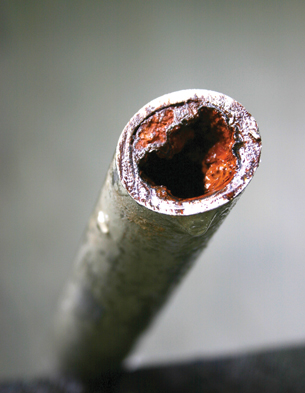Module 4 Intro
1. Module 4 Intro
1.18. Lesson 3 Intro
Module 4—Properties of Solutions
Lesson 3—Solubility
 Get Focused
Get Focused

© L Kragt Bakker/shutterstock
Have you ever had a shower that left you feeling like you weren’t able to wash all the soap off your body? Tap water, especially in Alberta is often “hard” due to the presence of calcium and magnesium dissolved in the water. While hard water is safe to drink, there are problems associated with its use.
The minerals found in hard water have a tendency to form limescale deposits in household pipes, reducing the flow of water. Also, kitchen and bathroom fixtures that regularly use tap water may build up soap scum due to the fact that calcium and magnesium can react with detergents to form a residue that is difficult to rinse away. You may wish to view some examples of problems caused by hard water.
In this lesson you will learn about the solubility of various substances in water. You will also learn about the chemistry of water softeners, a common way to treat hard water.
Essential Questions
- What are saturated solutions?
- How can you predict the solubility of a substance in water?
- How is dynamic equilibrium involved when studying saturated solutions?
 Module 4: Lesson 3 Assignment
Module 4: Lesson 3 Assignment
Save a copy of the Module 4: Lesson 3 Assignment to your course folder. Later in the lesson you will receive more information about how to complete this assignment and when to submit it to your teacher.
In this lesson you will continue to work on the two Proactive Citizen Projects listed in the Module 4 Summary and Assessment document. The topics and a scoring guide are available in the Module 4 Summary and Assessment document.
You must decide what to do with the questions that are not marked by the teacher.
Remember that these questions provide you with the practice and feedback that you need to successfully complete this course. You should respond to all the questions and place those answers in your course folder.